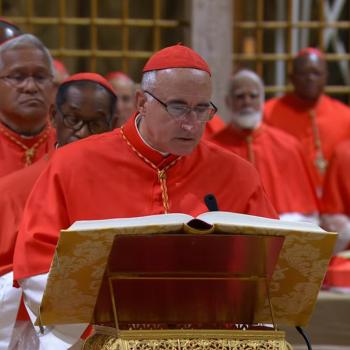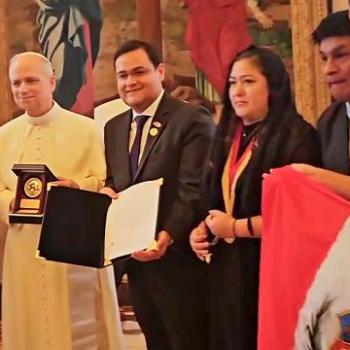About ninety Vocation Directors from throughout the United States have gathered at Immaculate Conception Seminary in Huntington, New York to discuss the upcoming changes that will affect priestly formation throughout the world. Father Luke Ballman, a priest of the Archdiocese of Atlanta, and Executive Director of USCCB Secretariat for Clergy, Consecrated Life and Vocations (CCLV) opened the gathering by providing an overview of the upcoming changes.
On December 2016, Pope Francis issued new universal norms for priestly formation, the third such document since the conclusion of the Second Vatican Council. Since 2016, Bishops of each nation in the world have issued documents implementing the norms described in the universal document called the Ratio Fundamentalis Institutionis Sacerdotalis. These documents are then approved by Rome and are followed by every seminary in that country.
The United States Conference of Catholic Bishops (USCCB) composed a draft for the Sixth Edition of the Program of Priestly Formation following the 2016 instruction and submitted it to Rome. After delays due to COVID and extensive conversations, the process concluded on March 22, 2022 when Rome confirmed that the document presented is in accordance with universal law. This document, or the Sixth Edition of the Program for Priestly Formation (PPF6) , is now valid for the next five years. The last PPF was issued fifteen years ago, and the new one preserves many of its norms. We now await a Decree of Promulgation by the President of the USCCB which will specify when the new document will be implemented.
The major highlight of the new PPF6 is that academic categories no longer frame priestly formation. The primary benchmark in seminary formation has been academics: as long as you pass your classes, you keep moving, unless you have a very notable deficiency elsewhere. The past categories of “college”, “pre-theology”, and “theology” will no longer exist, but will be replaced by the following stages: Propaedeutic, Discipleship, Configuration, and Vocation Synthesis. The stages will have very specific benchmarks that the seminarian will have to meet before continuing in formation. The stages will also better integrate the four dimensions of formation: academic, pastoral, human and spiritual. Academics will no longer be the driving force in seminary formation.
The Propaedeutic Stage is an introduction and will last a minimum of twelve calendar months. This new stage focuses much on human dimensions such as awareness of family of origin issues, family dynamics, spoken and written communication, relational skills, empathy, ability to form friendships, openness to prayer, importance of spiritual direction, etc. This stage may take place in the Diocese or in the Seminary context.
The Discipleship Stage focuses on intimacy with Jesus Christ, Christian virtue and philosophy.
The Configuration Stage focuses on priestly identity.
The final Vocation Synthesis Stage occurs outside the Seminary after the man is ordained a Transitional Deacon. This stage occurs in the Parish setting and it focuses on integration and transition.
The participants at this conference taking place outside New York City look forward to learning more about the new document and how it will be implemented throughout seminaries in the United States. As the Director of Vocations for my Diocese for the past eight years, and ready to continue as the Director of Seminarians, this material is essential for the formation work that I do. I do believe that the new PPF6 is more demanding and will lead to even better prepared priests for ministry.
















